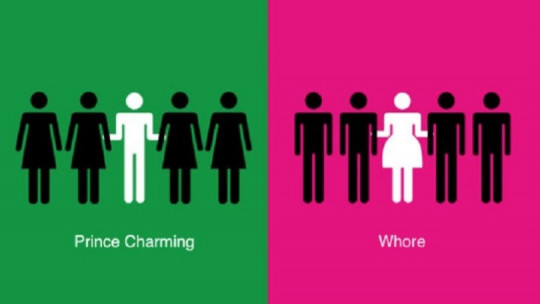Gender biases refer to gender-based attitudes, beliefs, prejudices and stereotypes that can consciously or unconsciously influence people’s decisions and actions. These aspects can have a significant impact on the way people are treated in society and in various areas of life, including work, education, health and everyday life.
Addressing gender biases is important to promote a more equitable world, as these types of biases can have negative effects on gender equality, equity and justice in society. In this PsychologyFor article, we explain What are gender biases, types and examples
What are gender biases?
The meaning of gender bias refers to the preconceived attitudes, beliefs and stereotypes that exist in society based on a person’s gender, and that can influence the way it is treated and evaluated. These biases can be both conscious and unconscious and can manifest in various areas of life, including education, work, health, culture and society in general.
These biases can reinforce traditional gender stereotypes, such as belief that certain roles and responsibilities are appropriate for men or women, often resulting in inequalities in areas such as salary, career advancement, access to education and decision-making.
Types of gender bias
There are several types of gender biases that can manifest in various situations and contexts. The most common types of gender bias are:
- Performance bias: Used in the context of cognitive biases or prejudices that can influence the evaluation of a person based on their gender, race, or other factors. This bias refers to the tendency to evaluate a person’s performance in a biased way, that is, to give them a rating or judgment based on stereotypes rather than an unbiased and objective evaluation of actual performance.
- Attribution bias: refers to the tendency to make attributions of success or failure, achievement or error, based on a person’s gender. This means that people tend to explain the behavior of men and women differently, often attributing their successes or failures to individual characteristics, gender stereotypes, or prejudices. In this article, we tell you how prejudice affects society.
- Appreciation bias or double rejection: Appreciation bias refers to the tendency of people to more positively appreciate or value a person’s qualities, skills, or contributions based on their gender. The term “double rejection” is sometimes used to describe situations where a person faces discrimination or rejection for belonging to two marginalized groups, such as being a woman and belonging to an ethnic minority.
- Maternity or paternity bias: refers to discrimination or prejudice based on a person’s maternity or paternity in the workplace. This bias involves treating people differently or unfairly because of their pregnancy, maternity, paternity, or family responsibilities.
Recognizing these biases and working to address them is essential to achieving greater gender equality and a more equitable society.

Examples of gender bias
Gender biases can manifest in a variety of situations and contexts. Here are some examples of specific gender biases:
- Hiring bias: An employer might prefer to hire a male candidate over a female candidate for a leadership position in a company, based on gender stereotypes that assume men are naturally better leaders.
- Salary bias: A woman and a man doing the same job and having the same experience could receive different salaries, with the woman earning less than the man due to ingrained gender biases.
- Promotion bias: This bias in companies manifests itself in that, despite having similar skills and achievements, a man could be more likely to be promoted than a woman in an organization due to the perception that men are better suited for leadership roles
- Bias in education: Teachers may unconsciously give girls less attention and support in math or science classes, which could influence their academic performance.
- Bias in healthcare: Doctors may downplay a female patient’s symptoms or not take them as seriously as those of a male patient, which can lead to poor diagnosis and treatment.
- Bias in the media: Stereotypical gender representation in the media can influence social expectations and attitudes, perpetuating traditional gender roles and unrealistic beauty standards.
- Bias in family decision making: The belief that women are responsible for housework and childcare can influence the unequal allocation of responsibilities in the home.
- Bias in everyday life: Gender prejudices and stereotypes can influence the way people interact in their personal relationships, from choosing children’s toys to dividing household chores.
This article is merely informative, at PsychologyFor we do not have the power to make a diagnosis or recommend a treatment. We invite you to go to a psychologist to treat your particular case.
If you want to read more articles similar to What are gender biases, types and examples we recommend that you enter our Social Psychology category.
Bibliography
- García Beaudoux, V., D’Adamo, O., Gavensky, M. (2018). A typology of gender biases and stereotypes in journalistic coverage of women candidates. Mexican Magazine of Public Opinion, 13 (24), 113-129.








